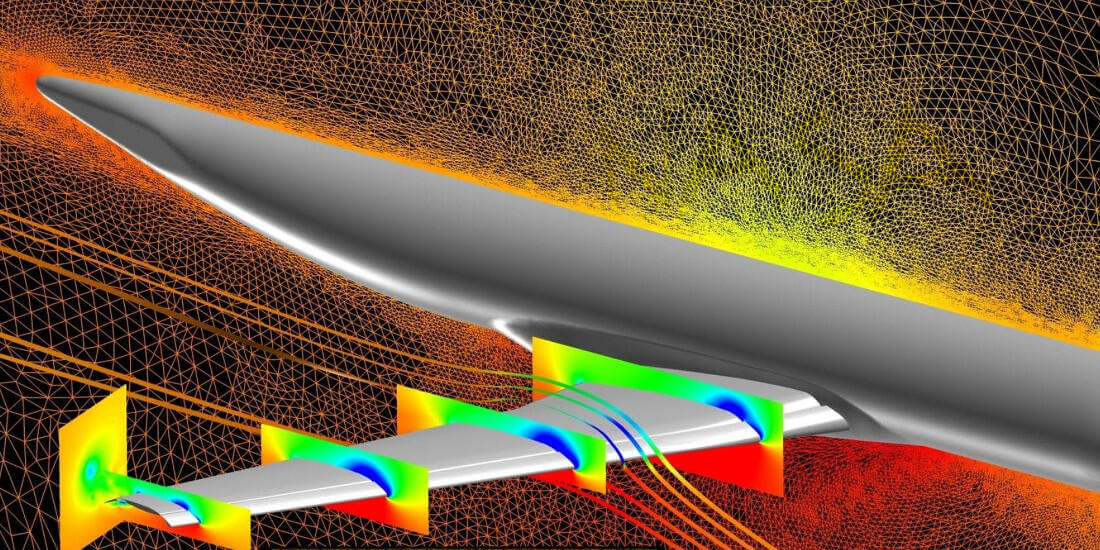The world of simulation and CAD (Computer-Aided Design) is vast and intricate. Interoperability between CAD models and simulation tools is vital to ensure accurate and reliable results. Discover here how tartan meshing fits into this context and how the solution CADfix stands out in this industry.
Understanding Tartan Meshing in CAD for Simulation
In the CAD arena, tartan meshing appears as a particularly suited meshing technique to capture the geometric characteristics of a modeled object. But what are its benefits and applications?
Applications of tartan meshing
- Fluid Mechanics Simulation (CFD): It serves to discretize the simulation domain, thereby solving fluidic equations on each mesh element.
- Finite Element Analysis (FEA): It breaks down an object or structure into elements to solve mechanical equilibrium equations.
- Thermal Simulation: It assists in modeling heat transfers, providing a clear view of temperature distribution.
Benefits for simulation
- Uniformity: Tartan meshing is consistent, thus facilitating equation solving.
- Computational Efficiency: Its structure promotes resource optimization, especially for iterative methods.
- Adaptability: It can be refined to better capture geometric or physical features.
- Mesh Quality: Its uniformity minimizes the risk of ill-shaped cells, ensuring accurate simulation.
- Integration: It can be paired with other meshes to maximize benefits.
The power of CADfix in generating tartan meshing
Beyond data exchange tools and geometry repair, CADfix CAE offers advanced features for mesh definition. This includes assigning control parameters, properties, and boundary conditions to CAD geometry. Furthermore, full associativity with the resulting CAE mesh is maintained. Integration with the user interface is also possible via an API extension.
CADfix CAE introduces various meshing styles, element types, quality controls, and smoothing options. Among them:
- Semi-automatic 2D and 3D meshing
- Automatic triangular and tetrahedral meshing
- Finite difference meshing (Tartan) for structured grids
This generator uses a 3D lattice definition to approximate the geometry in regular cells. These cells are suited for electromagnetic analyses or other CFD analyses.
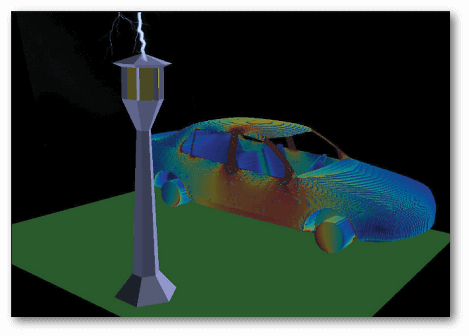
Analysis of lightning effects near a vehicle
The CADfix CAE user has full control over lattice divisions and grading in I, J, and K directions. Divisions can be uniform or non-uniform, and can generate cells that are not necessarily equal. This often results in a sophisticated "Tartan" pattern (and you thought we just liked plaids).
The Tartan meshing CADfix can be applied to edges, surfaces, or solids to generate a structured mesh comprised of:
- 2D edges for edges
- 4-sided 2D faces for surfaces
- Rectangular prisms for solids
Incidentally, we call the resulting mesh elements of CADfix CADDF "twinkles" (yes indeed!).
A significant aspect is that these elements maintain their connectivity with the parent geometry, allowing the transmission of physical and material properties of its geometric parent - a critical point for electromagnetic effect modeling.
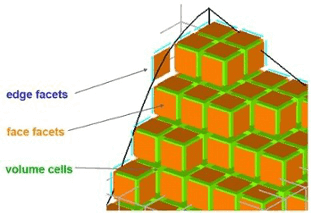 The power of "Twinkles"
The power of "Twinkles"
In addition to speed and robustness, the CADfix tartan mesher performs wonders: it offers users the possibility of crafting open-surface models and capturing the precise geometry of complex curved surfaces with 2D cells, which can be very challenging to achieve. Besides tartan meshing, CADfix also generates, in parallel, a smooth finite element (FE) mesh on the geometry. This allows CADfix to display analysis contour results on the CAD geometry rather than on the tartan mesh (results are often easier to use if displayed on the actual geometry rather than on a heap of "sugar cubes"!).
The CADfix tartan mesher is user-friendly. The user simply defines the IJK grid around the model with the required spacing parameters to capture physical phenomena and clicks the "mesh" button.
The CADfix API enables users to extract the resulting mesh data directly into their analysis code. The API also facilitates the integration of the CADfix tartan mesher as a plugin in other analysis applications requiring a robust and swift mesher.
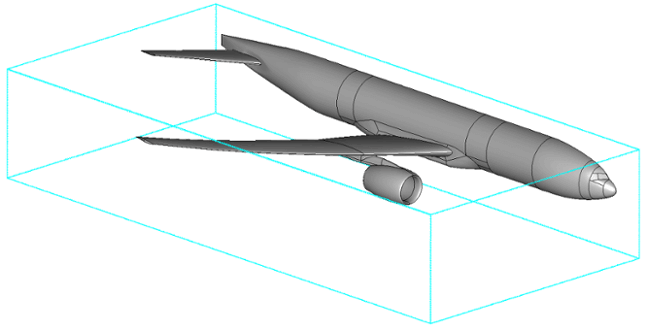
CAD Geometry in CADfix with defined IJK network

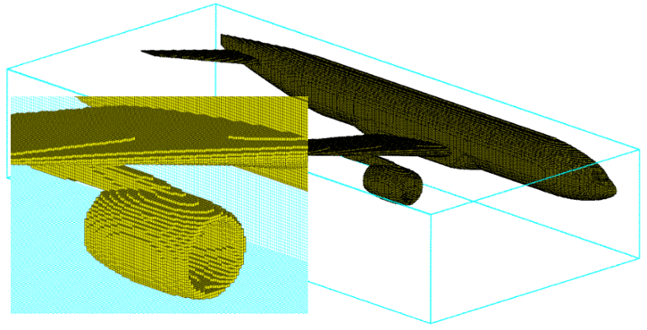
CADfix tartan mesh with zoomed view of Tartan mesh solid cells
Tartan meshing in action
The CADfix Tartan mesher has proven to be a very capable, stable and robust meshing option. When combined with the CADfix geometry handling and mesh-geometry associativity in a customisable analysis framework, it provides an effective specialist pre-processing solution that sits at the heart of some impressive computational analysis work.
Leading international companies including BAE Systems, Saab and Horiba MIRA, use the CADfix Tartan mesher for their electromagnetic analysis applications, often building meshes comprising of several million cells.
Analysis system vendors, including Denver based Electromagnetic Applications, Inc. (EMA), have also implemented CADfix CAE with a customised user interface as a pre- and post- processor for their commercial multi-physics solver suite EMA3D, as described in a new ITI case study.
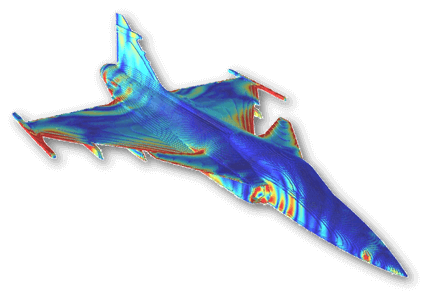
CADfix Tartan mesh of the Saab Gripen with analysis results contours (courtesy of Saab AB)
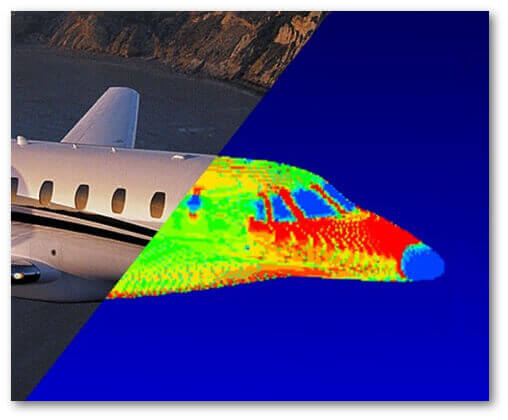
EMA3D lightning simulation with results on the Tartan mesh (courtesy of EMA, Inc.)
Generating a reliable mesh is fundamental for simulation outcomes. Tartan meshing offers a unique solution, combining the benefits of uniformity and computational efficiency with the versatility to adapt to various geometries. CADfix offers a robust tartan meshing tool, catering to the demands of the CAD and simulation community, emphasizing precision and user-friendliness.


